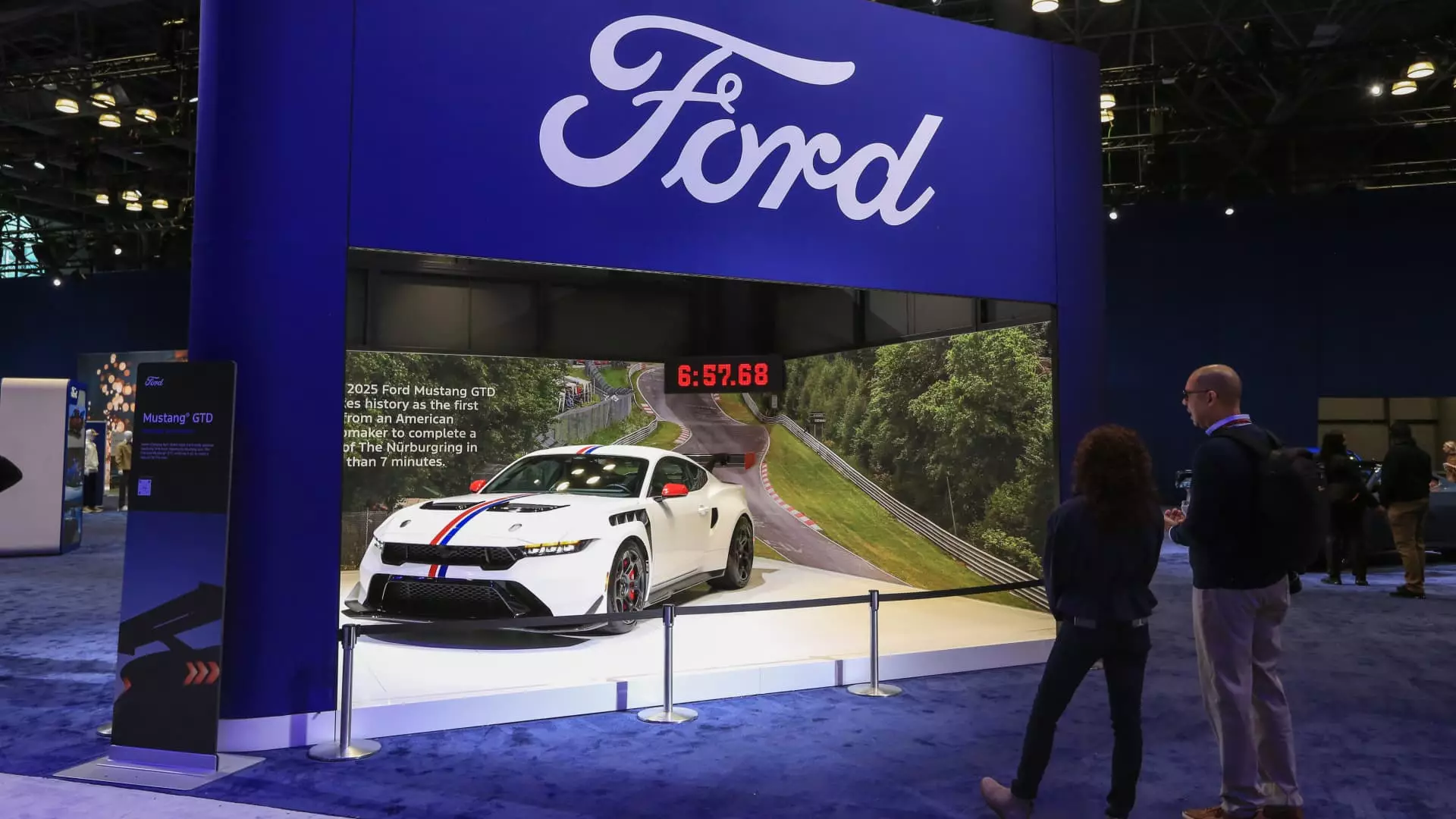In an industry marred by volatility and geopolitical turmoil, Ford’s recent earnings report offers a distorted picture—part resilience, part desperation. The automaker managed to top revenue expectations for the second quarter, yet beneath that surface lies a narrative fraught with challenges, from political tariffs to strategic disarray. It’s tempting to see Ford’s financial metrics as a testament to grit and adaptability, but a deeper analysis exposes the fragility of its position and the ideological contradictions at play.
Despite reporting a robust $50.2 billion in total revenue—an encouraging 5% growth from last year—the company’s bottom line paints a grimmer picture. Adjusted EBIT of $2.14 billion fell notably short of Wall Street forecasts, and their net loss of $36 million underscores the turbulence they navigate. The recurring theme here is a business caught in the crosshairs of political machinations and internal strategic missteps. The tariffs imposed by the Trump administration, which Tories and centrists alike feel are a blunt instrument, have hammered parts costs and squeezed profit margins. Ford’s efforts to mitigate these effects by engaging directly with policymakers remain laudable but ultimately insufficient, revealing the limited influence even a giant like Ford wields.
The core issue isn’t just the tariffs but the broader geopolitical instability they symbolize. Ford’s optimistic talk of “constructive conversations” with the Trump administration seems more a strategic talking point than an effective solution. The reality? The tariffs continue to create an uneven playing field, forcing Ford into a defensive crouch. While GM predicts a $4-5 billion impact into 2025, Ford estimates a $3 billion hit, leaving them more vulnerable than their rival. Yet, they still cling to a hope of offsetting at least one billion through mitigation—an optimistic endeavor that underscores their precarious financial balancing act.
Strategic Shift or Stumbling? Ford’s Electric Gamble and the Politics of Transition
Ford’s bold pivot into electric vehicles (EVs) appears as a shining beacon of innovation. Yet, as a center-left liberal, I see this only as a half-measure—an attempt to balance the need for environmental progress with the realities of a volatile political environment. Ford’s EV losses of over $1 billion highlight how premature or poorly executed their transition may be. Their recent sales figures show progress but also reveal the daunting challenge ahead: how to scale EVs profitably when government incentives are waning and policies threaten to roll back gains.
The Trump administration’s stance on EVs—ending tax credits and seeking to dilute greenhouse gas standards—places Ford in a precarious position. It’s an environment where capital investment becomes a gamble, and infrastructure remains inadequate. Ford claims to be out of sync with competitors, “in a good way,” but I challenge this notion. Delaying full-scale EV adoption to navigate this politically charged terrain risks leaving Ford further behind. While their “Model e” division incurred losses, the strategic risk is justified only if it secures long-term competitiveness, which remains highly uncertain given current policy volatility.
Moreover, Ford’s emphasis on maintaining its U.S. manufacturing base should be celebrated. But it must not be mistaken for a nationalist solution to a global industry. True progress requires embracing international cooperation, green policies, and investments that transcend political whims. Partial Americanization without comprehensive innovation might stem the tide temporarily, but it won’t suffice in an era of climate crisis and global economic interconnectedness.
The Mirage of Stabilization: Is Ford’s Future Still a House of Cards?
While Ford brags of a 14.2% increase in vehicle sales and a slight boost in electrified vehicles, these figures conceal a less rosy picture. Their traditional “Blue” operations declined, with revenue slipping and profit margins narrowing. Recalls of over 694,000 vehicles costing hundreds of millions reflect ongoing quality issues and management volatility. This isn’t just a recall—it’s a symptom of deeper operational flaws in a company trying to pivot quickly amidst external pressures.
The company’s response to these recalls and challenges appears reactive rather than strategic. Layoffs, cancellations of EV programs, and announced charges signify a business scrambling to stay afloat rather than chart a confident course forward. Meanwhile, their “Pro” commercial segment grows, showing pockets of resilience, but can this compensate for the overall decline? Not for long.
Ford’s stock performance, up 9% this year, indicates that investors still see value in the automaker’s potential—perhaps under the misconception that size alone guarantees survival. But financial optimism must be tempered with realism. If the company’s internal challenges—for production, recalls, and profitability—are not addressed decisively, then the current upward trend may soon reverse. The murky waters of tariff dangers, policy shifts, and market volatility threaten to drown their fragile recovery.
Ford’s recent activities reveal a corporation teetering on the edge of strategic burnout. The corporate narrative is a mix of cautious optimism and underlying vulnerability—an empire trying to adapt but often stumbling in the face of unprecedented economic and political upheaval. Without a clear, innovative, and politically savvy approach, Ford risks becoming a cautionary tale for the industry—an once-proud emblem of American manufacturing slipping into irrelevance amid chaos.

